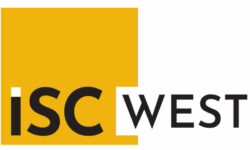Hikvision Highlights Deeper Video Camera Intelligence, Drones & More
A trade press tour of China hosted by the global video surveillance supplier featured a look at Sino-American security industry opportunities, new product innovation, and overall technology expansion in the Far East.

Hikvision attracted a big crowd to its large booth at the Security China 2016 event in Beijing in October, where it showcased advanced analytics in its cameras as well as newer form factors like drones and EZVIZ recreational cameras.
HANGZHOU, China – For a country steeped in thousands of years of tradition, China is at the same time as forward-thinking as it gets when it comes to areas such as technology.
Witnessing the enthusiasm for cutting-edge tech, as well as the seemingly massive opportunity for Sino-U.S. economic relationships was just part of the premise behind a recent press tour to China hosted by Hikvision, whose wares nicely tie together old and new as they could be spotted in use from the most modern downtown hotels near the company’s headquarters here all the way out to the Great Wall (talk about perimeter protection).
Besides Hangzhou, the visit included stops in Shanghai and Beijing, where media members participated in a press conference with Hikvision CEO Yangzhong Hu and toured the company’s booth during the Security China 2016 trade show at the China International Exhibition Center.
Along with traditional video surveillance products, Hikvision highlighted its latest work in offerings such as drones (now on third-generation solutions), robotics and analytics.
Perhaps fittingly, the tour kicked off with a trip to the top of the Shanghai World Financial Center, whose 100th floor skydeck 474 meters up stakes claim as the world’s highest observatory.
What better introduction to the country’s biggest city than seeing it from truly the “eye in the sky,” in the context of visiting a global powerhouse supplier of products that are known for playing that role.
Inside Hikvision
The next leg led to Hangzhou, which embodies the country’s progressive vision. The onetime capital of China is now its tech capital, earning a reputation as the country’s “Silicon Valley,” Hikvision representatives pointed out. Indeed, the city is home to tech giants such as Alibaba and security industry competitor Dahua Technology, for one, is virtually a stone’s throw from Hikvision headquarters.
Having generated much business and growth activity in preparation for hosting the G20 and B20 international summits in September, Hangzhou is also home to major construction and expansion – and cranes everywhere – underscoring this tech explosion. Hikvision can count itself among the charge, as across the street from its current twin-tower HQ building, another two office towers are already far along in their construction and anticipated to be completed next year.
Inside the headquarters, the ground floor features a showroom of Hikvision’s various solutions and applications including:
- IP cameras
- analog and HD-TVI products
- mobile surveillance
- intelligent analytics applications and “deep learning”
- smart city applications
- education, transportation, law enforcement and banking verticals
- high-performance buildings
- big data
- drones and robots
- EZVIZ (the company’s consumer focused answer to GoPro)
An overarching theme to the products is the intelligence side, the company emphasized.
“We realized in 2006 that the challenge of analytics was going to come in, what we call AI [artificial intelligence] today, so we started establishing our team. Last year we started to develop analysis in cooperation with Nvidia using their GPU processor, and three days ago we announced we’re going to be working with Movidius’ VPU [visual processing unit],” noted Hu, speaking through translators during the press conference. “So we will have a lot of deep study and learning together.”
“We’d like to grow together with this industry,” he continued. “We have been very lucky to grasp the opportunities by the growth of digitized surveillance and IP, and we believe we have caught up the trend in artificial intelligence, the deep learning within this field. There’s a lot of big data we’ve collected through the past years, so we believe we’re going to contribute a lot to this industry.”

On the analytics front, at Hikvision’s showroom and in its Security China 2016 booth, the company was demonstrating advances in its dual-lens technology and 3D information produced by the imagery. Hu said the technology under development, on the camera end and the recorder end, can categorize people in 24 different ways.
Other visual-enhancement aids highlighted included its True Color Reproduction (for processes such as deciphering blurry license plates), Defog (to clear up other image impediments) and low-light technology.
“The accuracy is going to be much higher to tie into an information database,” said Daisy Dai, a Hikvision technical support engineer who led the showroom tour. “The stereo camera can recognize the height of person; rough estimate of gender, age; whether the person wears glasses or not. It can show the time the person is on camera, so it can compare with other cameras if it’s the same person or not.”
Such deep learning AI capabilities, Dai pointed out, can better allow the cameras and operators to study the context of the video and better recognize objects and other features captured – so, for instance, if law enforcement is searching for a clever criminal suspect who has tried to get away by switching license plates of the car he’s driving, the camera knows key features of the vehicle and will be able to match it during tracking.
At Security China 2016, the drone demonstration in Hikvision’s booth attracted crowds. Tech support engineer Charles Sun explained that the third-gen product’s flight time without charging has increased from 30 minutes to an hour now, and the six-wing design is more compact, allowing for thermal cameras onboard. It ranges up to 3-kilometer high flying with control distance from up to 1-kilometer away.
On top of that, the company also showed its rifle-like Defender Series UAV Intelligence Unit, which is in a category of products that breaks up drone communication signals.
Hu said Hikvision works closely with its integrators and end users to educate them on opportunities for emerging technologies such as drones. “Usually we start by identifying the target customer, then according to their needs provide the right product,” he said. “For example, in China we try to avoid forest fires and there’s usually a very high tower to oversee this where we set up a very long-range camera to monitor this, to capture the potential fire. If there’s some limitation or something blocking the scene in such an area we might need a very cost-effective drone to fly over and take a look.
“We not only provide the training and material and knowledge to our integrators, but to our end customers because they’re the ones who really care about the request,” he added. “Of course there’s maybe a lot of customization involved and we help them to customize their needs.”
Keep Reading: Factory Expansion and Robots Galore ->
If you enjoyed this article and want to receive more valuable industry content like this, click here to sign up for our FREE digital newsletters!

Security Is Our Business, Too
For professionals who recommend, buy and install all types of electronic security equipment, a free subscription to Commercial Integrator + Security Sales & Integration is like having a consultant on call. You’ll find an ideal balance of technology and business coverage, with installation tips and techniques for products and updates on how to add to your bottom line.
A FREE subscription to the top resource for security and integration industry will prove to be invaluable.
















